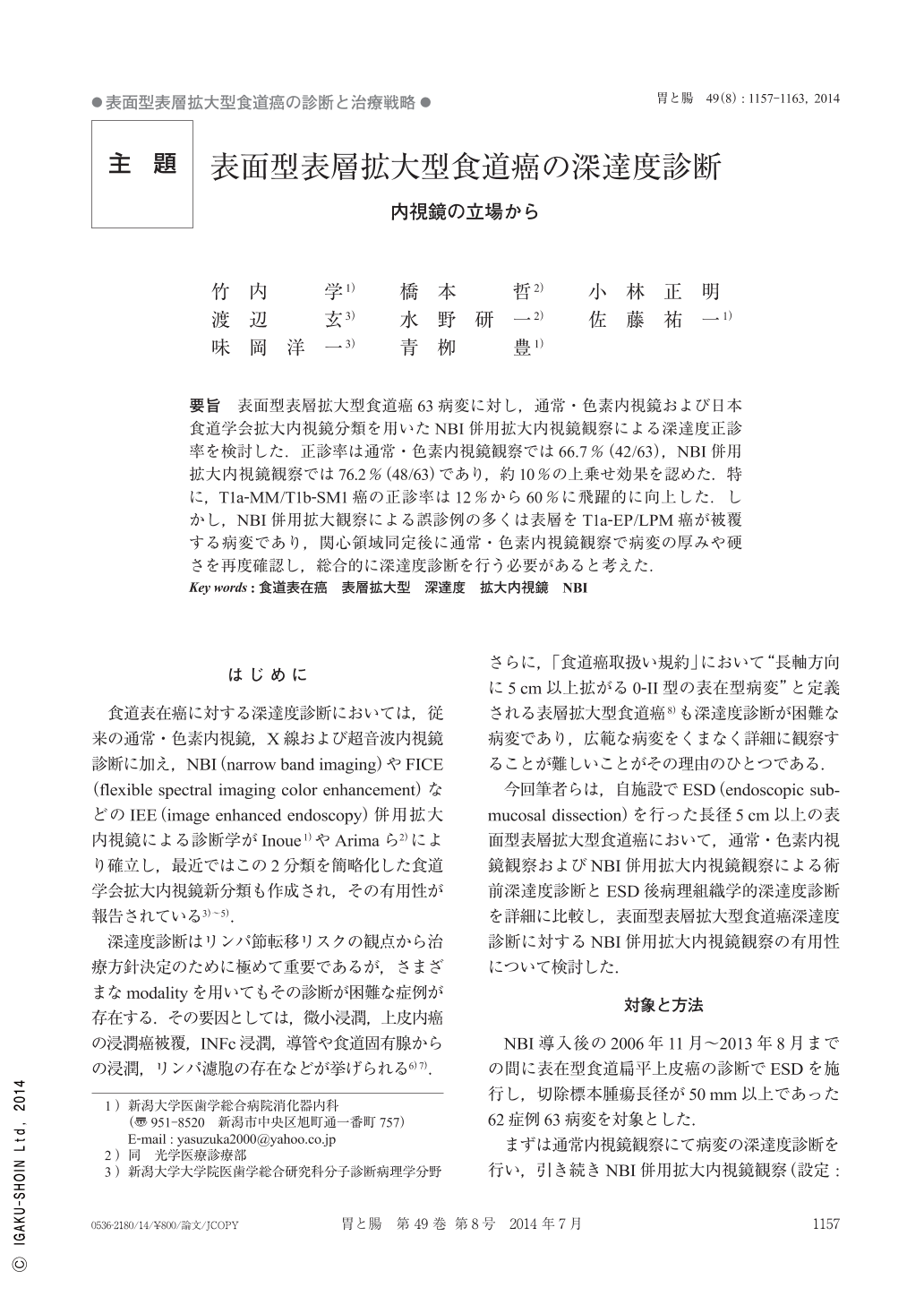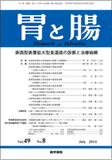Japanese
English
- 有料閲覧
- Abstract 文献概要
- 1ページ目 Look Inside
- 参考文献 Reference
要旨 表面型表層拡大型食道癌63病変に対し,通常・色素内視鏡および日本食道学会拡大内視鏡分類を用いたNBI併用拡大内視鏡観察による深達度正診率を検討した.正診率は通常・色素内視鏡観察では66.7%(42/63),NBI併用拡大内視鏡観察では76.2%(48/63)であり,約10%の上乗せ効果を認めた.特に,T1a-MM/T1b-SM1癌の正診率は12%から60%に飛躍的に向上した.しかし,NBI併用拡大観察による誤診例の多くは表層をT1a-EP/LPM癌が被覆する病変であり,関心領域同定後に通常・色素内視鏡観察で病変の厚みや硬さを再度確認し,総合的に深達度診断を行う必要があると考えた.
Misdiagnosis of the depth of tumor invasion in patients with superficially spreading ESCC(esophageal squamous cell carcinoma)is likely because of difficulty in detailed observation of the lesions. The accuracy of invasion depth assessments in patients with superficially spreading ESCC was evaluated by conventional/chromoendoscopy and NBI(narrow-band imaging)magnifying endoscopy at our institute. Sixty-three consecutive lesions diagnosed as ESCC and treated by endoscopic submucosal dissection were evaluated from November 2006 to August 2013. The overall accuracy of conventional/chromoendoscopy was 66.7%(42/63), and the reason for misdiagnosis was underestimation of the depth of invasion because of uneven lesions. On the other hand, the overall accuracy of NBI magnifying endoscopy was 76.2%(48/63), and the positive effect was approximately 10%. In particular, the rate of diagnosis of T1a-MM/T1b-SM1 carcinomas was greatly improved. However, most lesions that were misdiagnosed by NBI magnifying endoscopy presented characteristics of T1a-EP/LPM carcinomas on the tumor surfaces. Therefore, estimating the thickness and hardness of the regional area after observing the lesion with NBI magnifying endoscopy may be a better diagnostic strategy.

Copyright © 2014, Igaku-Shoin Ltd. All rights reserved.


